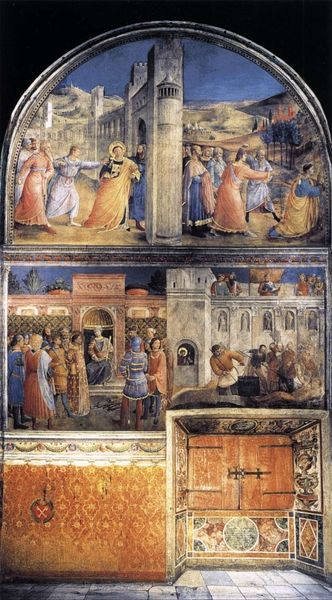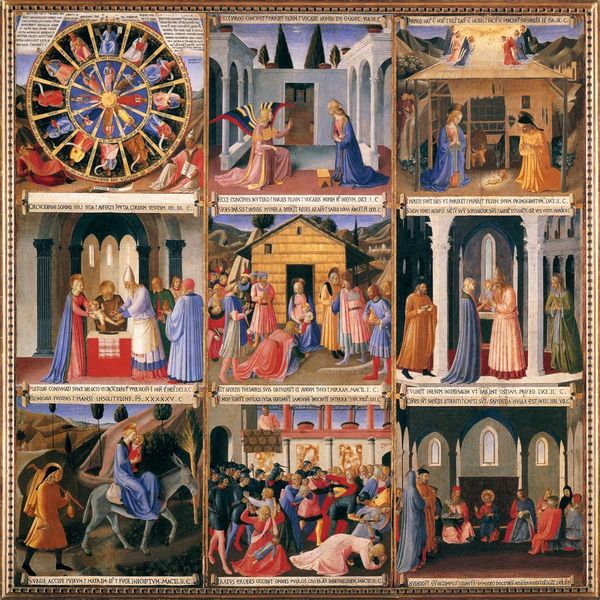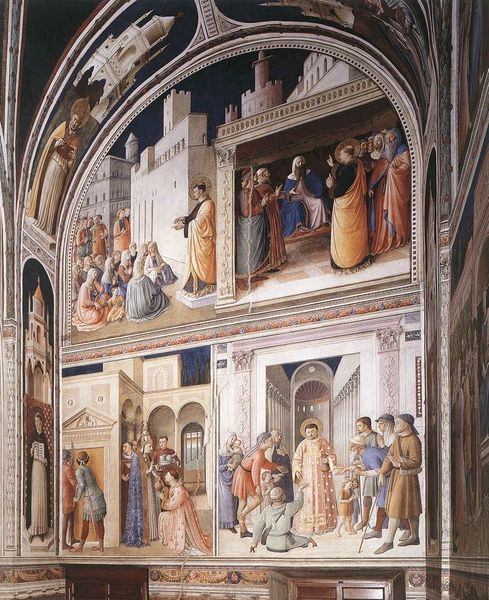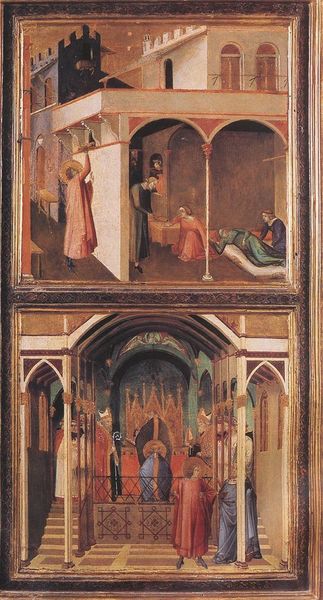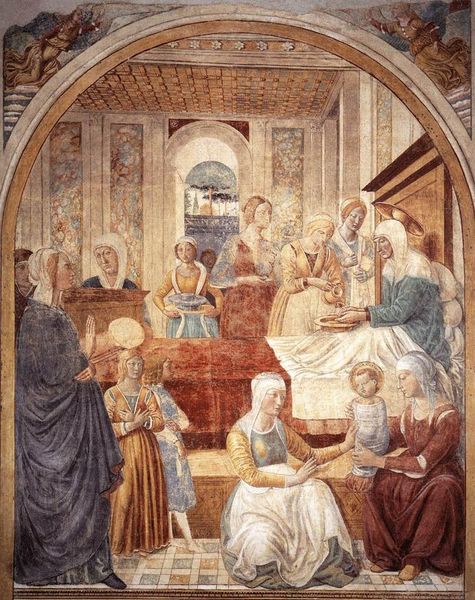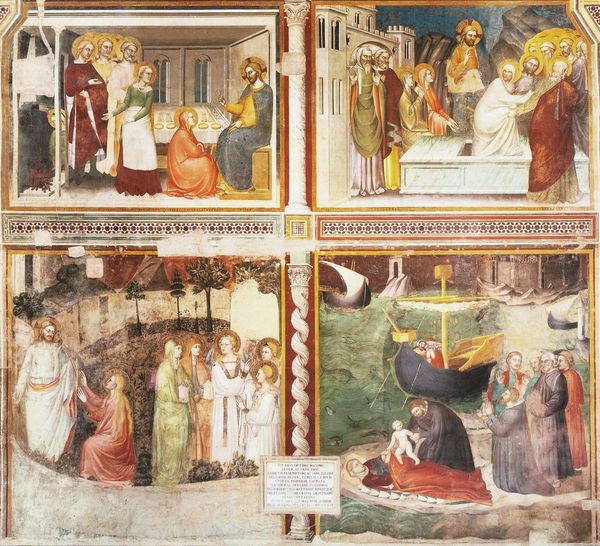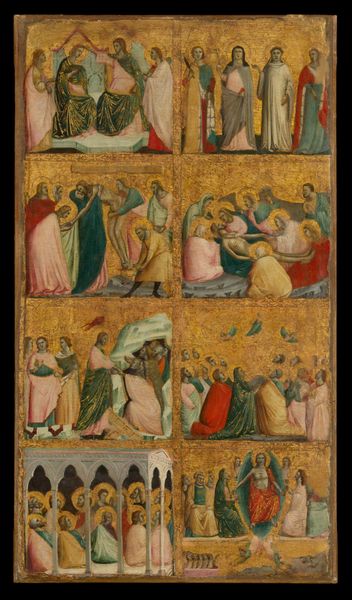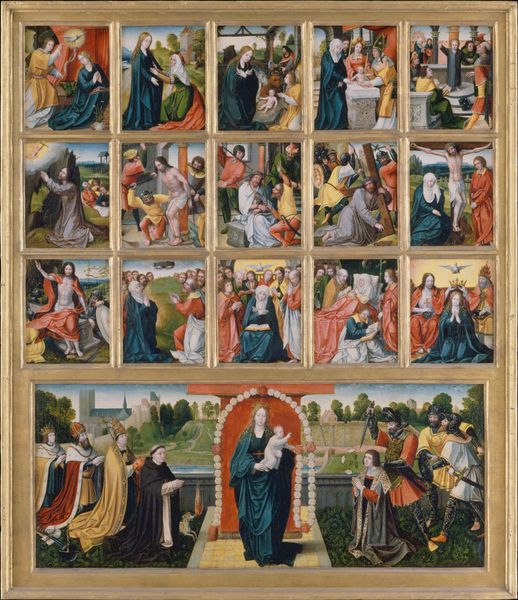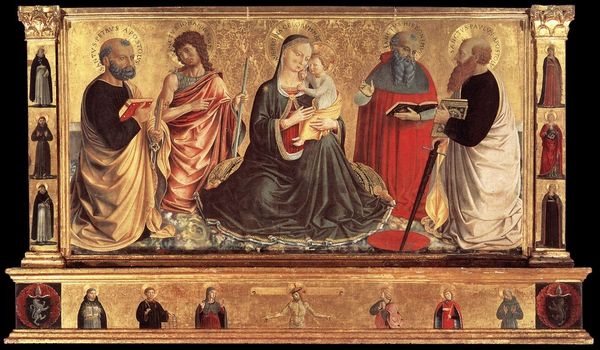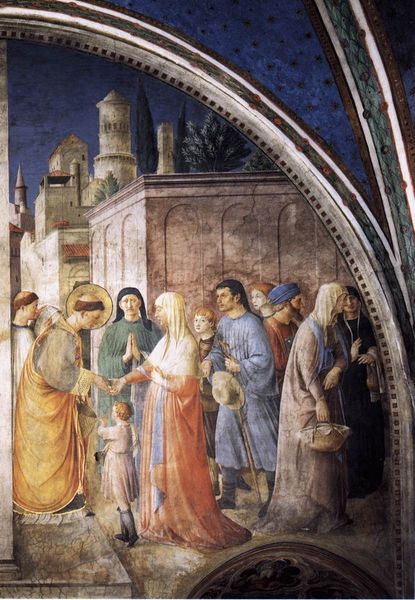
Paintings for the Armadio degli Argenti 1452
0:00
0:00
fraangelico
Basilica di San Marco, Florence, Italy
tempera, painting
#
narrative-art
#
tempera
#
painting
#
figuration
#
christianity
#
history-painting
#
italian-renaissance
#
early-renaissance
Copyright: Public domain
Curator: Here we have a series of tempera paintings referred to as Paintings for the Armadio degli Argenti by Fra Angelico, completed around 1452. These panels currently reside here in the Basilica di San Marco in Florence. Editor: My initial impression is that of a devotional comic strip; the scenes flow with a delicate cadence but the subject matter feels surprisingly brutal for Fra Angelico. The artist doesn't shy away from depictions of suffering and betrayal. Curator: Absolutely. The tempera, a meticulous process mixing pigment with egg yolk, lends itself to these jewel-like colours and smooth surfaces, don’t you think? The texture really is remarkably even for the scale and panel work. This reflects the value placed on skilled craftsmanship and preparation of materials within the Early Renaissance workshop. These would've been incredibly expensive at the time! Editor: Focusing on the iconography, note how each scene seems to carry symbolic weight. We have everything from the Last Supper and the betrayal of Judas, scenes in the Garden of Gethsemane, and even a disturbing series of the Flagellation of Christ, which of course signifies profound suffering. Each tableau, with its specific arrangement of figures and architectural details, acts as a visual prompt for meditation on the Passion of Christ. Curator: It is also thought that these scenes would have been produced within a large bottega, think of the level of collaboration in achieving the finished Armadio. This brings up fascinating questions regarding artistic license versus prescribed, or patron-led, design considerations during the early Renaissance workshops. Editor: The repeating visual motifs tie the scenes together, even disparate emotional states within different settings are echoed using these visual cues. The way gestures and colour palettes reinforce meaning makes the work still powerful and thought-provoking centuries later. These images aren't just narrative, they embody a potent religious psychology. Curator: Reflecting on the processes and skill required to construct these devotional works it's clear that these panels would've acted as physical manifestations of status. Editor: Considering these powerful iconographies together gives us pause to understand enduring legacies of emotional art throughout history.
Comments
No comments
Be the first to comment and join the conversation on the ultimate creative platform.
